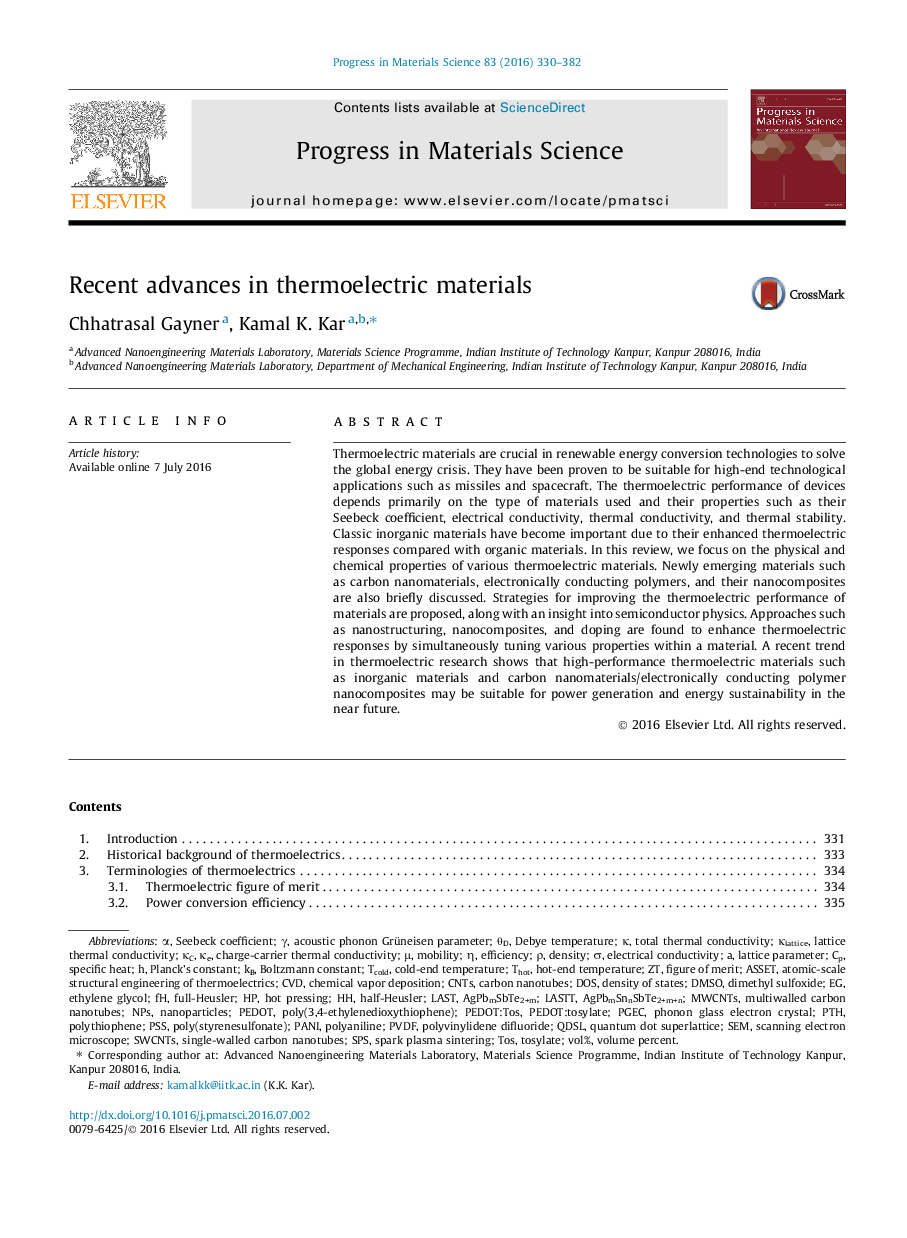| Article ID | Journal | Published Year | Pages | File Type |
|---|---|---|---|---|
| 1655800 | Progress in Materials Science | 2016 | 53 Pages |
Abstract
Thermoelectric materials are crucial in renewable energy conversion technologies to solve the global energy crisis. They have been proven to be suitable for high-end technological applications such as missiles and spacecraft. The thermoelectric performance of devices depends primarily on the type of materials used and their properties such as their Seebeck coefficient, electrical conductivity, thermal conductivity, and thermal stability. Classic inorganic materials have become important due to their enhanced thermoelectric responses compared with organic materials. In this review, we focus on the physical and chemical properties of various thermoelectric materials. Newly emerging materials such as carbon nanomaterials, electronically conducting polymers, and their nanocomposites are also briefly discussed. Strategies for improving the thermoelectric performance of materials are proposed, along with an insight into semiconductor physics. Approaches such as nanostructuring, nanocomposites, and doping are found to enhance thermoelectric responses by simultaneously tuning various properties within a material. A recent trend in thermoelectric research shows that high-performance thermoelectric materials such as inorganic materials and carbon nanomaterials/electronically conducting polymer nanocomposites may be suitable for power generation and energy sustainability in the near future.
Keywords
volume percentQuantum dot superlatticeFull-HeuslerSWCNTsTOSpTHPVDFPSSMWCNTsSPSCNTSPEDOTDMSOPANINPsLASTEthylene glycolSpark plasma sinteringEfficiencyBoltzmann constantMobilityDensity of statesTosylatevol%AssetDOSDebye temperaturepolyvinylidene difluorideDimethyl sulfoxideElectrical conductivityChemical vapor depositionCVDSeebeck coefficientSpecific heatHot pressingSEMFigure of meritscanning electron microscopeMultiwalled carbon nanotubesNanoparticlesSingle-walled Carbon NanotubesCarbon nanotubesHalf-HeuslerLattice thermal conductivityLattice parameterpoly(3,4-ethylenedioxythiophene)poly(styrenesulfonate)PolyanilinepolythiopheneDensity
Related Topics
Physical Sciences and Engineering
Materials Science
Nanotechnology
Authors
Chhatrasal Gayner, Kamal K. Kar,
